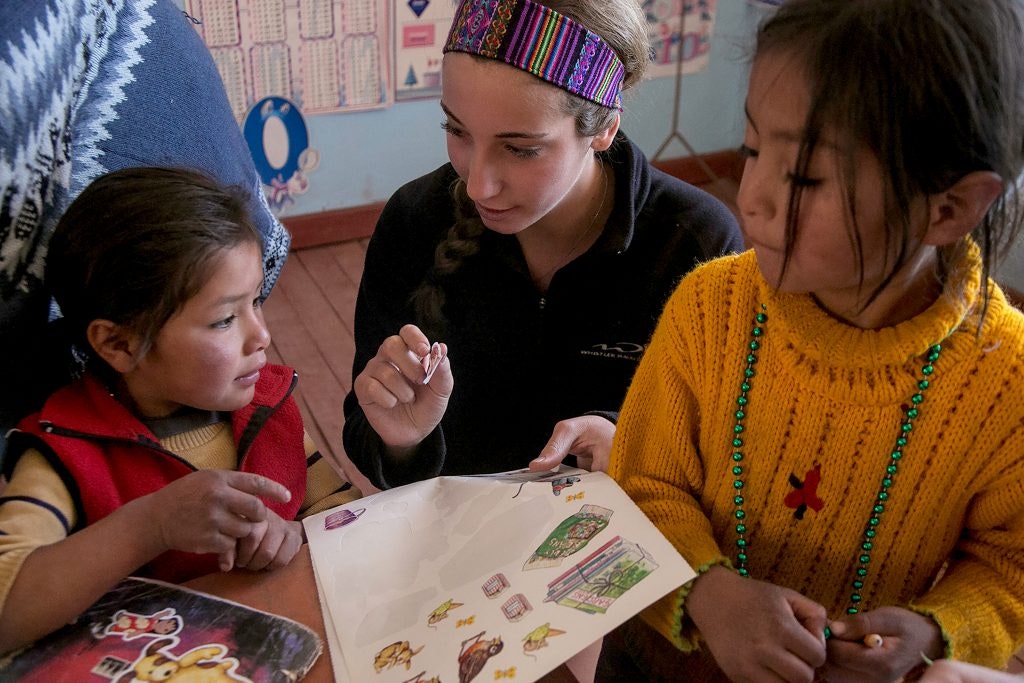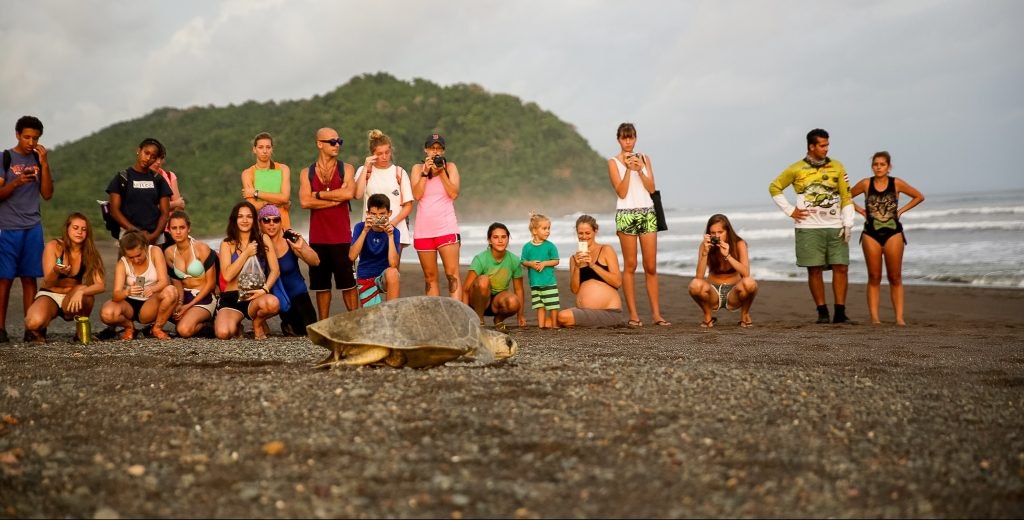What is a high school capstone project?
A capstone project is a final research project or creative effort at the end of a student’s studies. The term comes from architecture, where the capstone is a final piece on top of a building. This “cap stone” signifies that construction is complete; it’s the crowning achievement.
The capstone project helps students show their knowledge in a specific subject area. These capstone projects can be mandatory or voluntary as part of an academic program, typically as middle school or high school senior projects.
Popular capstones are research papers, creative projects or community service initiatives. This can include a culminating project, capstone paper, trip or activity that allows students to have community-based learning opportunities.

Rustic students help build new homes during the Floating Village Service Expedition in Cambodia.
What are the benefits of capstone projects?
Many schools require students to round out their high school education with a capstone experience. The valuable insights gained can offer numerous benefits with practical applications to students. It’s one thing to talk about poverty, environmental degradation, or other worldly threats in a classroom; it’s another thing to see it and work on ways to alleviate it. These include:
- Presentation skills
- Project planning
- Time management skills
- Public speaking skills
- Project management
- Ability to conduct research and analyze data
- Increased self confidence

Donate your time to working with Peruvian youth on meaningful education initiatives. Copyright: © 2014 Rustic Pathways
What are the advantages of a capstone experience for high school students?
Capstone projects on the high school level became more prominent before the turn of the century. A 2000 study by Stanford University found that seniors were studying less and taking less demanding courses and that was having an impact on post-secondary success.
The problem often stems from the fact that seniors tend to trail off in their engagement once college acceptances are announced or other career choices are made. The Stanford study found that even students who took more rigorous senior courses like computer science were more likely to drop out of school or need remedial courses when they had a strong case of senioritis.
A capstone experience or graduation project is intended to prevent these problems and keep high school students engaged. It also has many other benefits, including:
- Increasing motivation and confidence
- Preparing students for college applications, college admissions, college coursework and future careers
- Giving students a real world perspective
- Helping higher-order critical thinking and problem solving skills
- Bridging theory with practice
- Building well rounded students
- Making connections
Clayton County High Schools in Georgia found that these projects led to job offers, internships and scholarships. In Baton Rouge Louisiana, Central High School noted that more than half of seniors thought the experience had influenced their future careers or plans.
A number of these projects involve multiple steps, including proposals, hands-on work, papers and presentations. As part of the process, a summer program between junior and senior year is frequently utilized by students. Some sophomores also begin the journey before their junior year to iron out the details of what they hope to accomplish.
How to Pick a Summer Program
A summer program can play a significant role in a capstone project. Here are ways that can work:
Explore a Global Topic of Interest
Many students have an interest in subjects such as animal conservation, environmental degradation, worldwide poverty or public health. A summer program is great to allow students immerse themselves into a particular subject and gain a broader perspective than what they may see at home.
It could look something like this:
Capstone Project – Saving Endangered and Threatened Species
- Research the topic.
- Look into local organizations involved in the effort. (Such as the city zoo, a nature reserve or rehab center.) Volunteer in a local project.
- Travel to Costa Rica for the Turtle Conservation Project. Learn how biologists are saving threatened sea turtles in another country. Give 30 more hours of service dedicated to this project.
- Write reflections on the trip.
- Return home and use the knowledge gained to further local efforts.
- Put together any required elements – papers, presentations, etc.

Students learn about threatened sea turtles in Costa Rica.
These same steps could be followed with a host of other projects. This could include a focus on supplying clean water to communities that would involve traveling to the Dominican Republic for the Mountain Air and Island Living program. Or a student could explore issues related to wealth inequality and sign up for the Come with Nothing program in Thailand.
Learn More about a Career
Many teens are of course uncertain about what path they may want to take after high school. For some, taking a gap year after high school is a way to explore interests more deeply before committing to a major or career. Others may already have a career idea but want to be sure they’re making the right choices. A capstone project is a great opportunity to explore options.
It could look something like this:
Capstone Project – Improving Access to Healthcare
- Research the topic.
- Volunteer at the local clinic, fire station or other healthcare organization.
- Travel to the Dominican Republic for the Public Health in the Caribbean program.
- Learn about real world problems some people face in accessing healthcare.
- Gather 30 hours of service while earning your Wilderness First Aid and CPR certification.
- Use the knowledge gained to explore careers in the healthcare field.
- Put together required elements to complete the capstone project – papers, presentations, etc.

Other options could include learning about education through the Summer Camp Leadership program in Costa Rica or delving into biology through numerous programs, such as the Animal Conservation in Australia program.
A student also could explore topics related to international relations in a number of programs. One option includes the Great Ghana Adventure program where students learn about the transatlantic slave trade, the effects of colonialism and the culture of indigenous groups.
Provide Service for Personal Development
Many schools include the option of having a capstone project center entirely on service. In that case, giving service in different settings and countries provides a much deeper perspective. Two programs that provide extensive service opportunities are Culture and the Crater in Tanzania and Life in the Bateyes in the Dominican Republic.
Both of these programs involve 50 hours of service. In Tanzania, students work with village leaders on service projects to improve living conditions and infrastructure. They also spend time on safari and learning about the nomadic Hadzabe, one of the last remaining hunter-gatherer tribes.

In the Dominican Republic, students are immersed in the underserved communities where Haitian sugar cane workers live. Students work on various construction and agricultural projects, help run a summer camp and unwind on the beach.
These capstone project ideas are just the tip of the iceberg. With a number of countries and programs to explore, there are many options.
Whatever summer program is chosen, students will certainly gain 21st century skills and knowledge that will help them to keep moving forward. For some, that experience even inspires them to consider a college gap year deferral to continue learning outside the classroom. For more trip information, visit our program page. Options there can be sorted by program type, service hours and more to spark ideas and help students plan how to round out their high school years in the best way possible.
